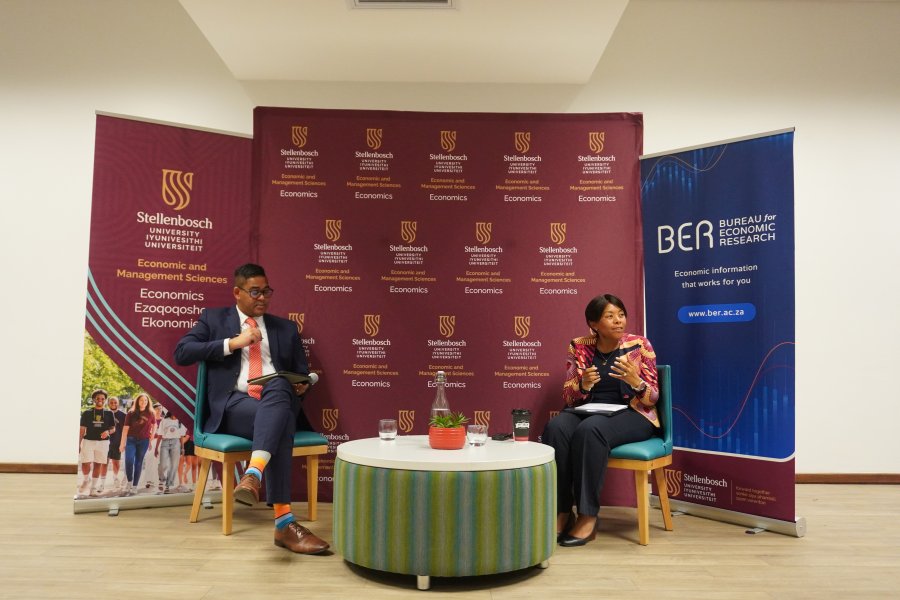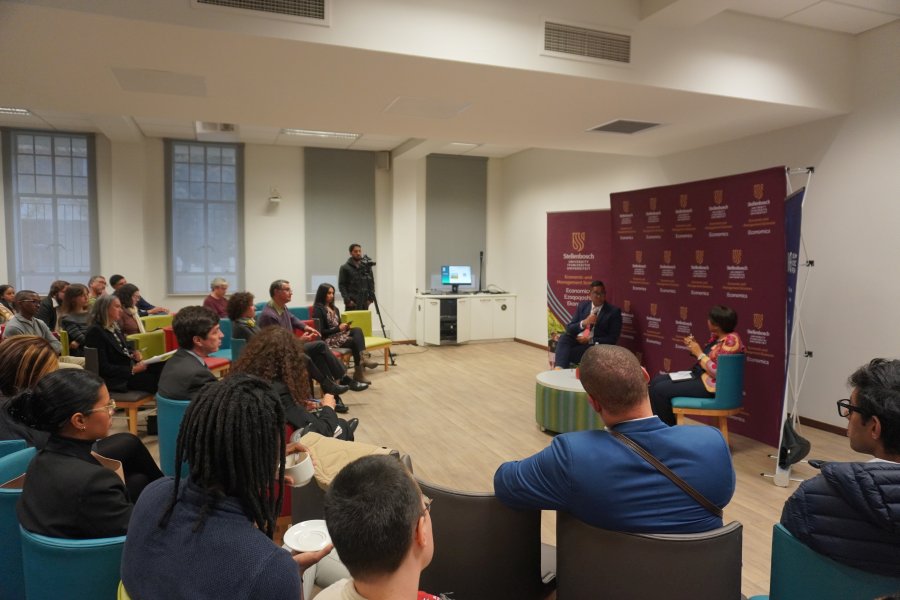
Deputy Governor of the South African Reserve Bank (SARB) Fundi Tshazibana unpacked the role of central banks in addressing climate-related risks during a fireside chat recently hosted by the Bureau for Economic Research and the Department of Economics.
Tshazibana, who is also the CEO of the Prudential Authority and a member of the Monetary Policy Committee, entitled her presentation “Green finance and the role of central banks”.
The economist, with extensive experience in public policy formulation and analysis having worked at National Treasury, the National Energy Regulator of South Africa and the International Monetary Fund, began by elaborating on how SARB perceives the financial risks posed by climate change.
“We are not the drivers of environmental policy in the country, but we are focused on the risks associated with climate change. South Africa experiences severe droughts about once every 20 years. Our estimate is that the inflationary impact of that would generally amount to a 10% impact on food prices and an overall inflation of 3%.”
“If we look at the floods that we experienced in KwaZulu-Natal in 2022, the estimated economic costs of that were sitting at about R54 billion and that’s not including the insurance-related costs. So, you can already see, from a central banking point of view, that there are risks and that there is a price attached to it.”
“So, what I am trying to illustrate through these examples, is that what is different about climate-related risks is that they can be multi-faceted – they can have an impact on inflation, credit risk exposures and insurance claims. They can even have an impact on things such as tourism numbers as we saw in Cape Town with the drought (during the 2016-2018 period).”
She says SARB has implemented various measures within its mandate to address climate-related risks.
“We have had to think about different modelling tools that we could utilise. Normally we use standard macroeconomic metric models, however, with the multifaceted climate-related risks we face, we have to think about other types of tools. You have to think about how you could use, for example, more general equilibrium models and more dynamic models. It is important to think how to better utilise things such as supply tables and how do you integrate data from different sources. How do you, for example, utilise information from meteorologists and what does that look like and what does that mean?
“We’ve also developed scenarios to help us estimate potential damage from physical risks of climate change and what that might look like. Other work that we’ve embarked on is to better understand the climate-related risks for the financial sector as a whole, and this year we’ve put out our first climate risk scenario common stress test where we allow all the banks to tell us how they would respond to a climate stress test.”
Tshazibana also expounded on the work SARB has been doing as part of the Network for Greening the Financial System – a group of central banks and supervisors that share best practices and contribute to the development of environment and climate risk management in the financial sector.

“We have banded together to develop long-term climate scenarios to estimate potential damage from physical risks of climate change and what it might look like. We then took this work further to also include short-term scenarios. The third pocket of work we were doing was for the central banks themselves to reflect on how they can become cleaner and greener. Some of the work we’ve done has been useful for national
governments when thinking about climate finance and what it could look like.”
Sophia du Plessis, Associate Professor and Chair of the Department of Economics, commended Tshazibana for her work at the SARB in addressing climate-related risks and its impact on the economy.
“It is really important for us as a country to tackle it now and to mitigate future risks which, if left unattended, could prove costly in the long run. We have to make sure that if those risks should materialise that we are prepared for it.”
She added that there are clear advantages to engagements like these where government officials present policy issues they face to the academic community.
“One key benefit is that both researchers at the University and our students can hear firsthand what the issues are and consider them as potential research topics. We pride ourselves on conducting research with social impact and a closer connection with policymakers can inspire meaningful and relevant research. Another advantage is that such engagements foster a two-way flow of information where academics gain insights which policymakers also benefit from.”

